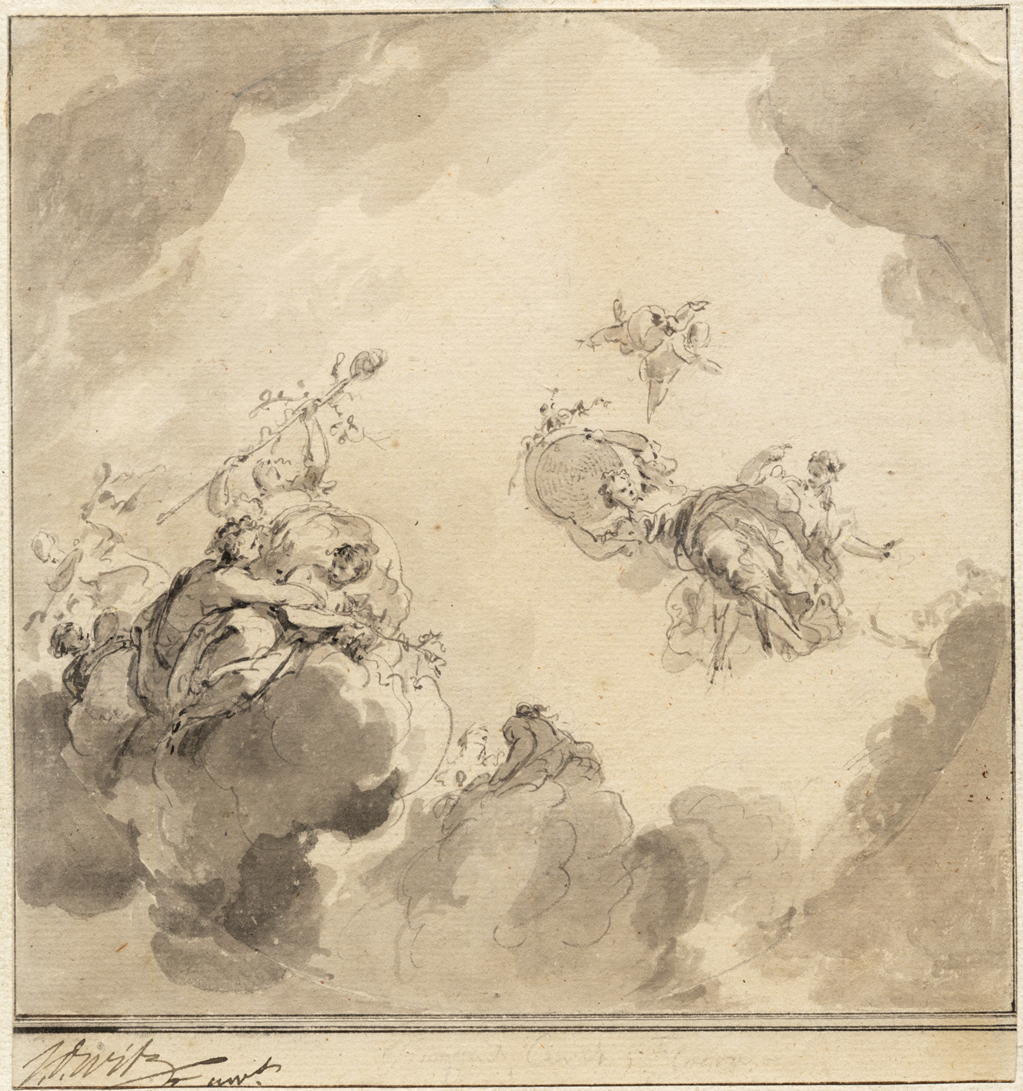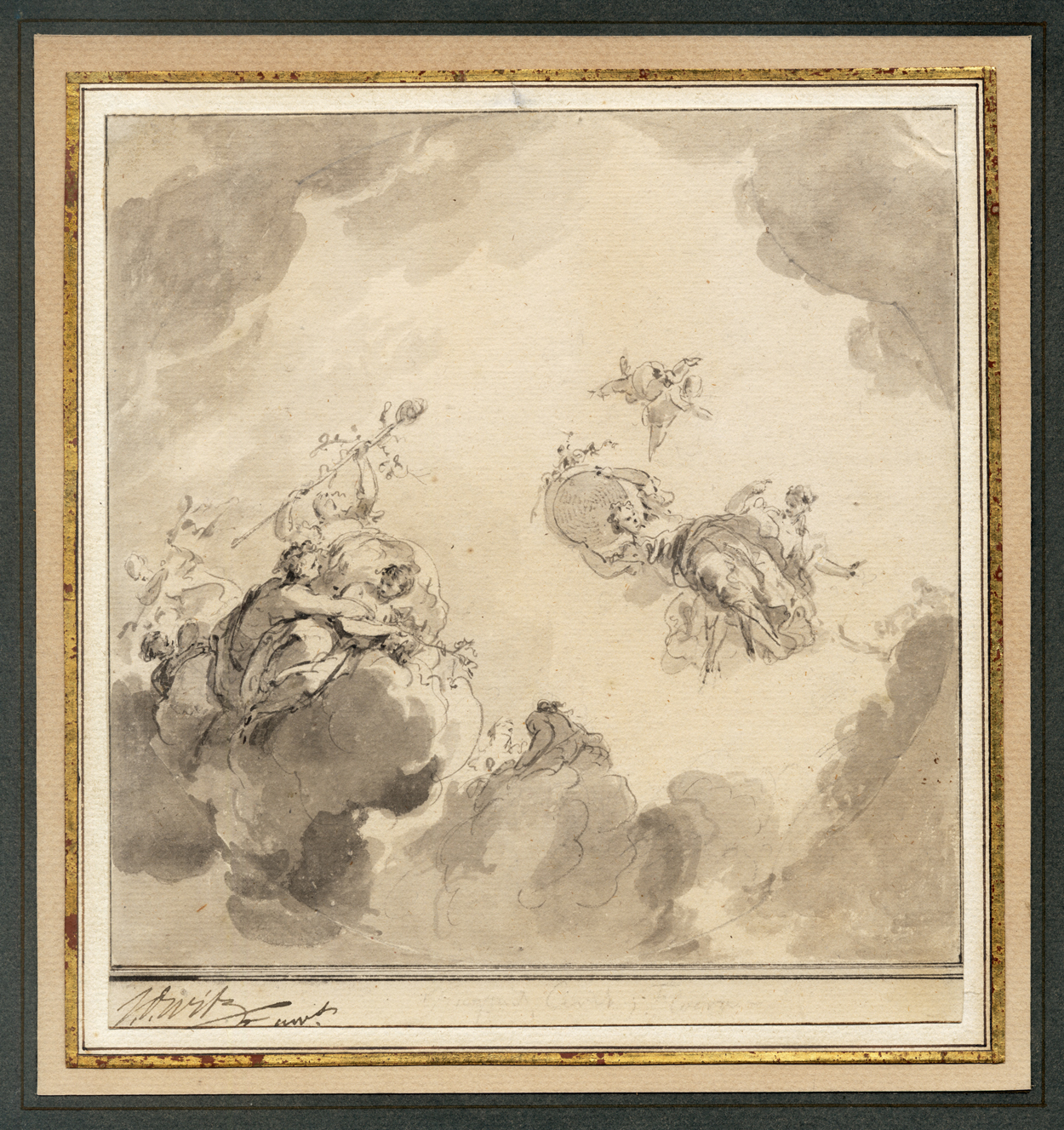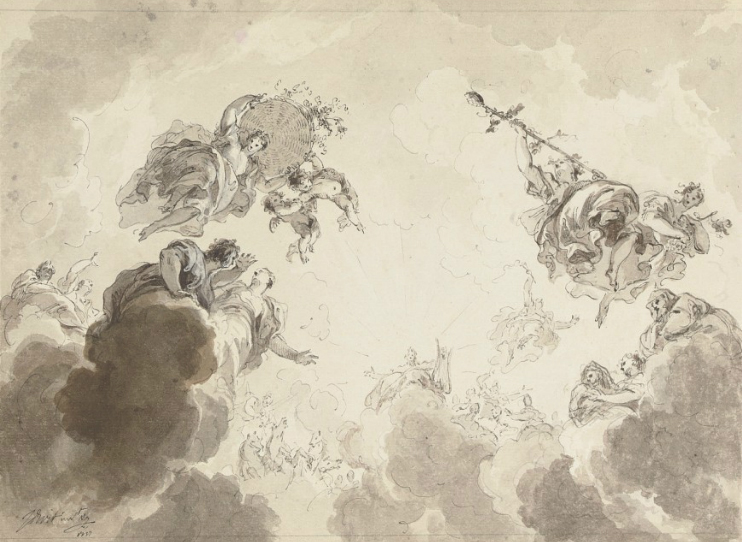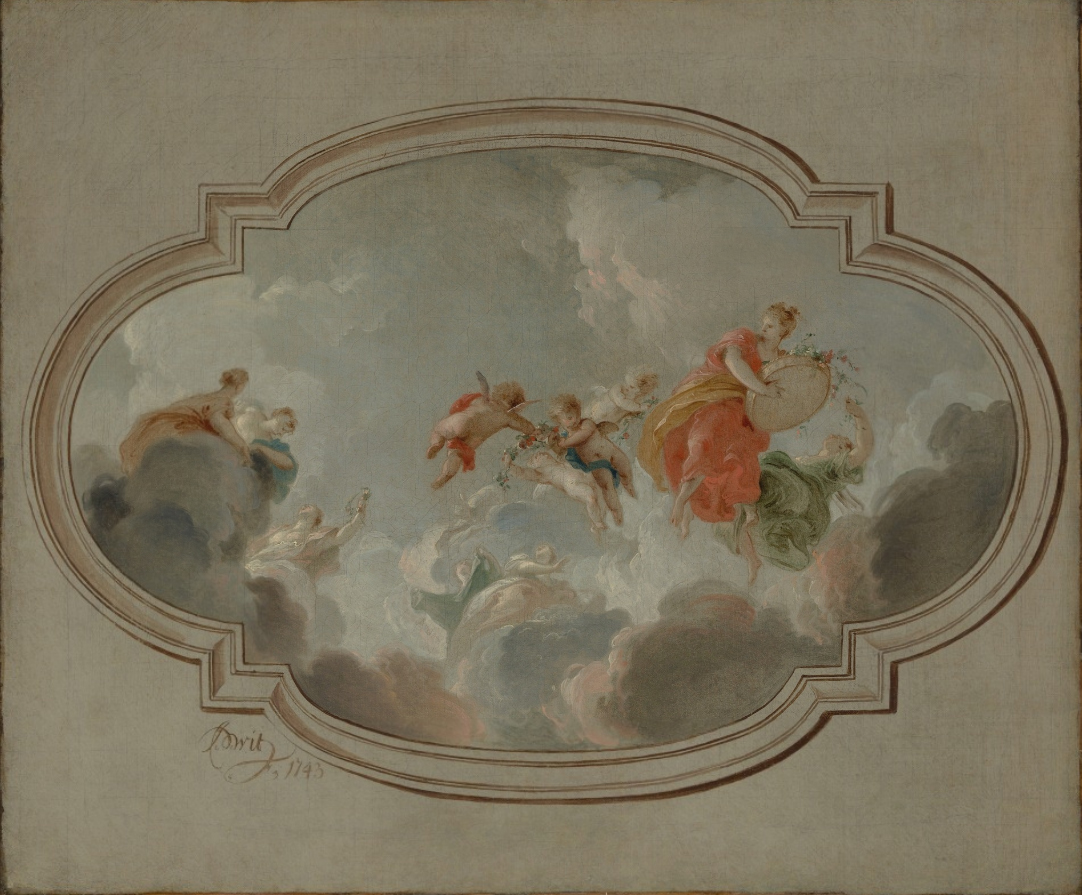JACOB DE WIT (Amsterdam 1695 – 1754 Amsterdam)
Jacob de Wit (Amsterdam 1695 – 1754 Amsterdam)
Design for a Ceiling: Flora and Ceres with the Fruits of the Earth
Pen and grey ink, grey wash, over traces of black chalk, framing lines in pen and grey ink, 218 x 203 mm (8.6 x 8 inch); laid down onto an 18th- or 19th-century collector’s mount with framing lines in pen and brown ink and gold leaf
Signed and inscribed ‘J.d.wit Ft invt.’ (pen and grey ink, lower right), and remains of inscription in graphite, partly rubbed out, ‘… Ceres Flora (?)’
Provenance
~ With Galerie Paul Prouté, Paris, 1982
~ Private collection, Paris, until 2014
Exhibited
Dessins – Estampes. Catalogue Papety, Paris (Galerie Paul Prouté) 1982, cat. no. 17, repr.
***
Jacob de Wit was born in Amsterdam and received his early training when he was only nine years old from the painter Albert Spiers.1 At the age of thirteen he left for Antwerp to study with Jacob van Hall and became an admirer of Rubens and Van Dyck. De Wit quickly developed into the leading decorative painter in Amsterdam. From 1717 on De Wit had so much work on his hands ‘that he scarcely knew were to begin’, according to the artist’s biographer Jacob van Gool in 1750.
One of De Wit’s specialities were grisaille paintings, giving the illusion of marble reliefs. These grisailles are knowns as ‘Witjes’, after the artist to whom they had brought such fame. Many of the houses along the Herengracht and Keizersgracht canals of Amsterdam are still adorned with ceiling paintings and wall panels by De Wit. Together with Cornelis Troost, De Wit is rightly considered among the most important and gifted artists of the Dutch 18th century, the Silver Age.
A ceiling design in the same technique by De Wit of identical subject but different composition was sold at Christie’s in 2009 (fig.).2 A modello in oils of Flora, accompanied by Zephyr, is preserved in the Metropolitan Museum, New York (fig.).3 De Wit frequently employed the mythological deities Flora (Spring), Ceres (Summer), Bacchus (Autumn) and Momus (Winter) in his ceiling paintings, which were hugely popular with Amsterdam’s elite.
The present beautifully preserved drawing illustrates perfectly why De Wit was so highly favoured – the virtuoso handling of the sheet is almost un-Dutch in flavour and can be compared to contemporary Venetian draughtsmen, notably Tiepolo.
SOLD
1. For the artist, see: A. Staring, Jacob de Wit: 1695–1754, Amsterdam 1958, J. Huisken, Jacob de Wit: de Amsteltitiaan, Amsterdam 1986 and G. van den Hout and R. Schillemans, Putti en Cherubijntjes: het religieuze werk van Jacob de Wit (1695–1754), Haarlem/Amsterdam 1995-96.
2. Pen and brown ink, violet-brown wash, heightened with white, 222 x 292 mm; signed and dated 'JdWit invt & f. / 1737’; Christie’s, London, 9 July 2009, lot 600, repr.
3. Oil on canvas, 53 x 63.2 cm; signed and dated 1743; inv. no. 07.225.301; Walter Liedtke, Dutch Paintings in The Metropolitan Museum of Art, New York 2007, vol. II, pp. 956–60, no. 220, colourpl. 220.




